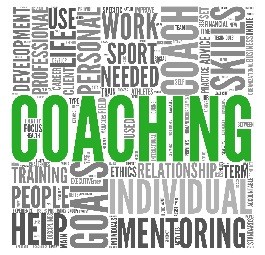
Many small & medium businesses SME�s - (and some large ones for that matter) have difficulties when it comes to marketing. Quite a surprise, really, when Amazon lists more than 65,000 titles on the subject; but that may be where the problem lies. In difficult and complex areas of business it is sometimes difficult to see the wood for the trees.
Over the years of working with SME and start up businesses with little or no marketing budget we have developed a simple view of what marketing is and the critical elements to be managed for success. The first point is to understand what marketing really is and the authors view is that it is the process of defining who are the people in the market wanting to buy your product or service and why they should choose your offer; the action on that understanding is to communicate with them so that they are motivated to buy.
A common error is to think that "everyone" is part of the target market: they are not. Virtually all businesses will derive about 80% of their business from just 20% of their customers. This is called the Pareto Principle and it turns up all the time. It is therefore critical to understand who that 20% are.
Where do they live? What are their interests? What motivates them? What do they value in life?
How frequently do they buy your product or service? What else could they choose to buy instead?
Really put yourself into their shoes to try and understand this and if you find it difficult have a conversation with some of them and listen to what they tell you (there are sometimes real benefits to getting a third party to do this for you so there is no "baggage" in the conversation). Once you have built this understanding, can you build a database of potential clients or customers?
The second area of consideration is why should they choose you? Even if you think you have a unique offer for the market, people will have alternative choices even if it is simply to do nothing. Try to draw a picture of the choices available to your target customer. Try to write a single statement of the benefit to the customer for each choice and then add six points that differentiates each choice.
For you own product or service, look to see how your customers can learn about your points of difference from how you present yourself to them. This can be hard work but do it well and you will be rewarded in the third stage. If you understand who and where the people are that may consider buying from you, what motivates them and how your product can satisfy them better than other offers, then the third stage of attracting motivated prospects is comparatively easy.
The key here is to be consistent and to be seen (or heard). If you distribute leaflets, make sure you distribute them frequently. If you go to networking events, make sure you go regularly; if you use advertising, it is better to be in every issue of the same publication or in several publications at the same time rather than taking a scatter-gun approach. Aim to have 8 to 12 communication activities running every year with clear messages and lots of opportunities for your prospective customers to see them. And make sure everyone in the business understands what you are doing as well.
Finally, don�t forget that communication is a two-way process. You must measure what you get back from your activities to understand how effective you have been with getting your message across. And if you are not getting the results you wanted; you are either not saying anything of interest or your message is not getting noticed. In either case, you need to go back to the start of the cycle because, if you are not saying anything of interest, you probably haven�t really understood your customer�s motives and if you are not getting noticed you probably haven�t understood where they are.
Even when you are getting the results you want, make sure you are getting feedback from customers about how happy they are with your product or service and the relevance of your communications with them. The world is constantly changing and evolving and what was important yesterday may not be tomorrow.
Marketing is not a luxury in it is the foundation of business success.

Every client relationship is different but the following points outline what you can expect when working with an advisor or associate from East Coast Consulting. We will be working for you and as your advisor we need to understand how your business currently works. Over one or two sessions, we will discuss your leadership, strategy, finances, service, sales & marketing, people, operations, culture and your personal work / life balance as the Managing Director / Owner. Following these sessions, we will have a look at the areas of the business that need the most immediate attention and agree a plan of action with you.
More Info